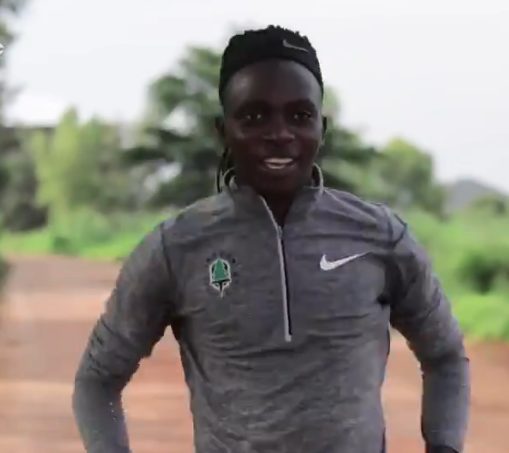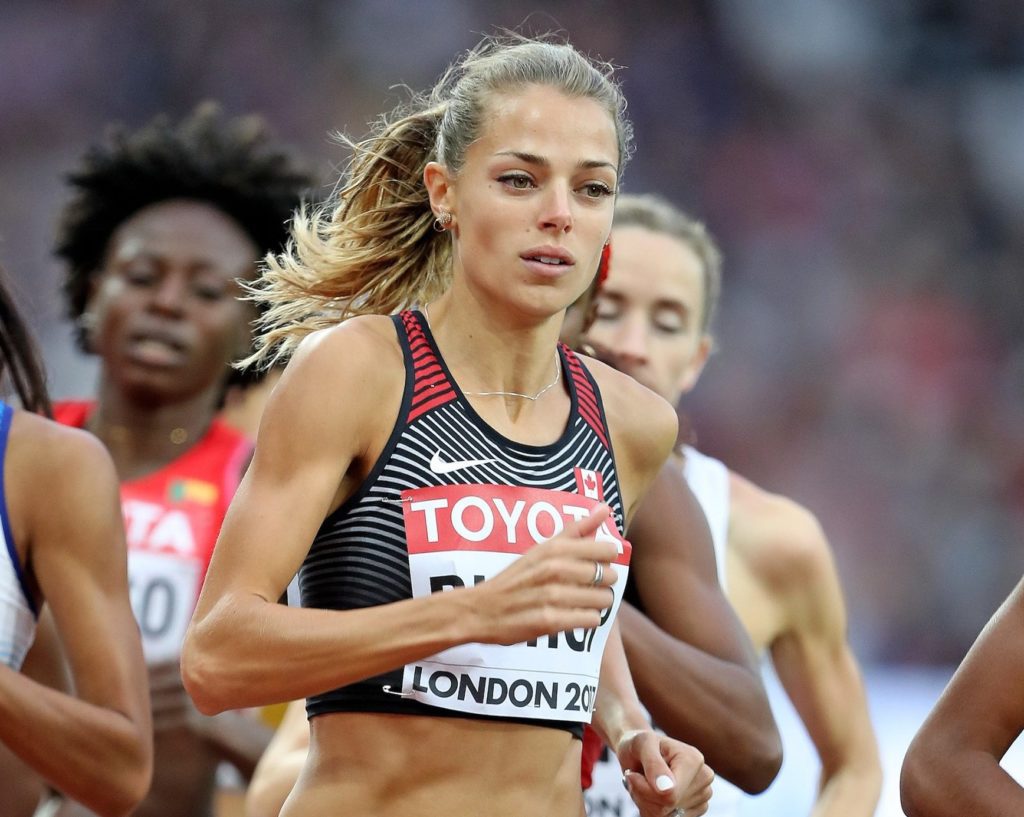Olympic silver medallist goes public about her hyperandrogenism
Francine Niyonsaba, the runner-up to Caster Semenya, reveals that she, too, will be affected by the IAAF's decision on female athletes and testosterone

Many Canadians are aware that Melissa Bishop just missed the podium in the 800m final at the Rio Olympics in 2016 which was won by South Africa’s Caster Semenya. And that, since she first emerged on the world athletics scene in 2009, Semenya, who has hyperandrogenism, has faced repeated calls to lower her testosterone levels or move up in distance. What few people remember, however, is who finished second in that race–Francine Niyonsaba of Burundi. Niyonsaba has just revealed publicly that, like Semenya, she, too, is affected by hyperandrogenism.
RELATED: IAAF denies attempting to classify Semenya as biologically male

Niyonsaba, who won silver in the 800m at the 2017 World Championships also (Bishop finished fifth in that race), recently did an interview with the Olympic Channel in which she openly discusses her hyperandrogenism and the difficulties she has faced in becoming a top-level athlete. (There are reports her confidential medical files were leaked.)
At the end of this month, the Court of Arbitration for Sport (CAS) is expected to release its decision on whether the IAAF can require female athletes to take medication to lower their hormone levels to compete at distances between 400m and the mile. If it rules in the IAAF’s favour, athletes like Semenya, Niyonsaba and the Indian sprinter Dutee Chand will have three options: to take medication to bring their testosterone down to not more than five nanomoles per litre, to move up to longer distances, or to compete against men.
Arguments on both sides of the issue have been heated. The retired Canadian race walker Ann Peel argued passionately in the Globe and Mail on March 22 that the IAAF’s treatment of these athletes constitutes harassment and discrimination, and that it is an example not only of sexism but racism as well, considering all of those affected are women of colour.
Rio 800m silver medallist Francine Niyonsaba talks about her quest for a better life, admiration for Caster Semenya and hyperandrogenism.
▶️ https://t.co/assWhFZbzU pic.twitter.com/lWUpWDojTB
— Olympic Channel (@olympicchannel) April 16, 2019
“As international sport moved away from the outright prohibition of female participation,” Peel writes, “the newest obsession has been about determining who even qualifies as a woman, or woman enough. Presumably, this arose from a fear that men would sneak in to women’s races. On what planet that might happen, I’m not sure: Most of the sneaking in was done by women who just wanted to race, as Kathrine Switzer did when she, as K.V. Switzer, ran the 1967 Boston Marathon.
RELATED: Coach John Fitzgerald dies at 67
Absolutely. https://t.co/GZDAjV6Qd2
— Ann Peel (@athleteswalk) March 27, 2019
“But the case of South African runner Caster Semenya… has inflamed matters to a different degree. Ms. Semenya is a great, clean, female athlete, and as a reward for being too damn good at the sport she loves, she has endured highly invasive questions about her body, her genetic composition and her place in the sport. No one, meanwhile, muses about whether some physical anomaly disqualifies great male athletes such as Usain Bolt; we celebrate his achievements and his charming flair. But we can’t seem to celebrate the transcendent female athlete, especially when that athlete is a black woman.
— Dutee Chand (@DuteeChand) May 29, 2018
“Never mind that the performance differential between the so-called “differences in sexual development” (DSD) or “high-testosterone” athlete is less than 3 per cent in running events, according to the IAAF’s own research–meaning that the difference is almost irrelevant. And never mind that hormone treatment is invasive and has very negative health implications. The IAAF would determine that Ms. Semenya has “unusually” high testosterone levels–which, it should be said, are well below the lowest threshold of a biological male–and ruled that she must chemically alter her body to continue competing, as part of broader regulations around female athletes with naturally high testosterone levels; the Court of Arbitration for Sport has delayed its decision on her challenge until late April.”
https://twitter.com/andraydomise/status/1109473161379102720
There is more, but Peel’s point is clear, and it’s informed by personal experience. (She recalls having her hair pulled out by a male official and tested to confirm her gender at the 1985 World University Games.) She goes on to decry sports authorities’ hypocrisy in trying to “protect” women against other women whose hormone levels they deem too high, while failing to protect them against sexual abuse and harassment by male coaches.
Some say the news that more athletes have DSD than previously thought means the IAAF is justified in imposing limits. Others believe the condition is in fact relatively common in elite athletes, that limits are unfair and unworkable, that hormone levels exist on a continuum, and that the advantage conferred by DSD is negligible.
Peel concludes: “Under the guise of protection, sport is effectively declaring open season on the body of the female athlete.
“We cannot pretend that this is okay. We must use our voices to ask tough questions, and we must demand to be heard. Because there are lots of young women following us who deserve a positive sport experience.
“And with my voice, I want to make my commitment clear: to help build a world where women can simply train and compete. Like the men get to do.”


